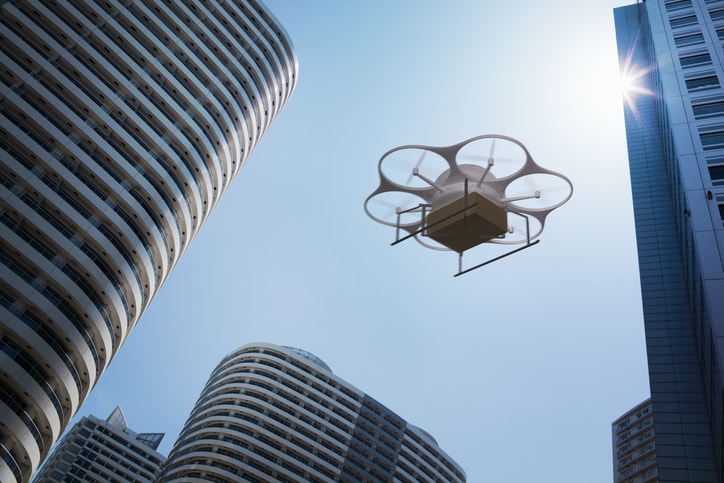Beyond their use as toys or aerial recording tools, drones are gaining ground as useful, fast, and sustainable means of transport, especially those capable of taking off and landing vertically. In fact, technically, this type of aircraft is called VTOL (Vertical Take-Off and Landing) or eVTOL, if they are electric, and are already being used as taxis, for loading and unloading, and for delivering medicine.
Facilities designed specifically to use this technology are known as vertiports. These spaces include modular platforms and advanced air management systems, such as direct connections to renewable energy networks, fast battery charging systems, and noise control solutions for operating in densely populated urban environments, according to the European Union Aviation Safety Agency (EASA). In fact, these facilities incorporate VHF (high-frequency radio) communication technologies and satellite data links to coordinate flight routes, LIDAR sensors for obstacle detection, and platforms reinforced with high-strength composite materials. Unlike traditional heliports, which do not have automated integration for air traffic control, vertiports function as smart hubs, capable of managing multiple simultaneous operations.
Pioneering Spain
Spain is currently one of the pioneering countries in Europe in promoting this type of mini airport for drones. So much so that pilot tests have already been carried out in Jaén, Zaragoza, and Lugo, in controlled environments to validate designs and operating procedures. At the same time, initiatives such as the Vertiport White Paper, published by Ineco—a multinational company under the Ministry of Development—establish the regulatory and technical foundations for this infrastructure, defining certification and approval requirements.
Aena has also begun to explore the potential of drones and, in collaboration with UrbanV and German manufacturer Volocopter, has signed an agreement to study the feasibility of a vertiport at one of the airports in its network, analyzing aspects of safety and air traffic modeling. For its part, Enaire, the agency responsible for air navigation, is working on protocols for integrating eVTOLs into controlled airspace, with route simulations and the design of urban skies shared with other manned aircraft. In addition, Teruel Airport will house the Urban Air Mobility Innovation Center (CIMAU), promoted by Vertiports Network, to certify Spain's first modular vertiport. This facility, backed by a €600,000 grant, is expected to begin operating electric air taxis in 2026.
With these and other projects underway, Spain is acting as a European test bed, with the aim of subsequently exporting the know-how to regions such as Latin America, North Africa, and the Mediterranean coast, where distances between urban centers and rural areas are significant and the terrain offers unique opportunities for air mobility.
Sustainability, key in its design
One of the fundamental aspects of vertiports is their design with minimal environmental impact. Currently, the trend is to use low-carbon concrete, recyclable metal structures, and photovoltaic panels integrated into the roofs of hangars and parking canopies. Likewise, the stations have energy storage systems using flow batteries that allow for the management of peak demand during simultaneous takeoffs and landings, according to the website of the Ministry of Transport and Sustainable Mobility.
This sustainable approach is also complemented by a commitment to multimodal connectivity. Vertiports are designed to be integrated with other modes of transport through dedicated lanes for electric buses, access to metro stations, and pedestrian bike lanes. This allows passengers to arrive at the vertiport by public transport, board an air taxi, and continue their journey without the need for private vehicles.
However, there are still challenges to overcome. EASA is working on design and safety specifications, and specific European regulations for UAM (urban air mobility) are still pending approval. Safety issues and noise pollution, in addition to the financial cost—building an advanced-certified vertiport can cost between five and eight million euros, according to Enaire estimates—and the uncertainty of the return on investment, as this will depend on the demand for regular flights and logistics operations, especially in medical emergencies and last-mile delivery.
In short, the development of these mini airports for drones is progressing steadily, and Spain seems to be leading the way in Europe in this move towards a new form of urban mobility that looks to the sky to relieve congestion on the roads.

